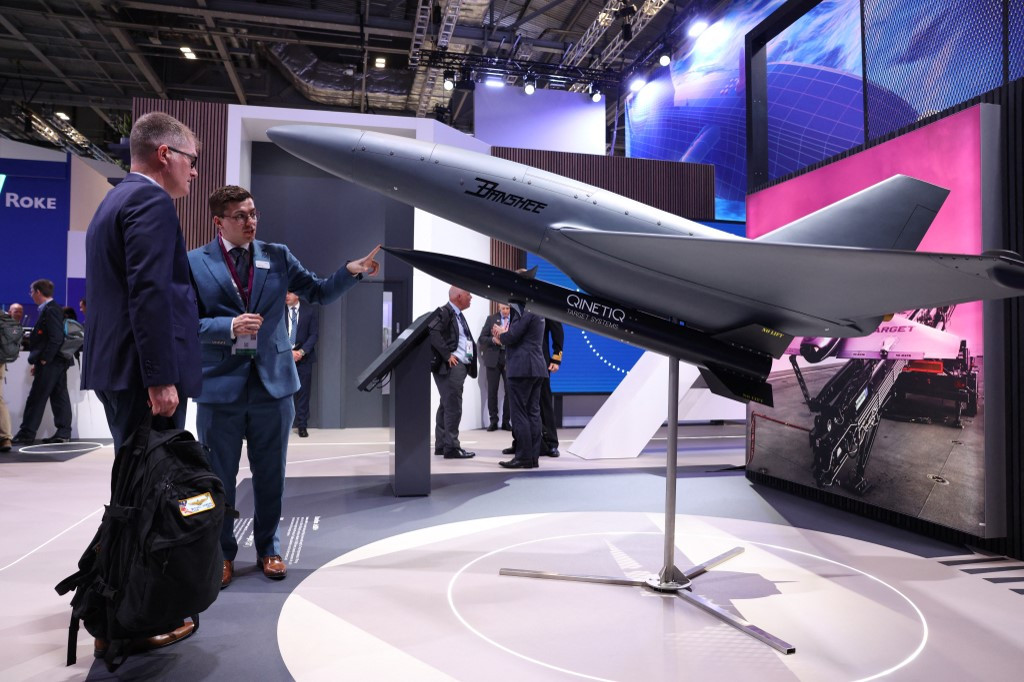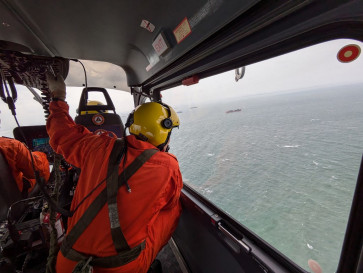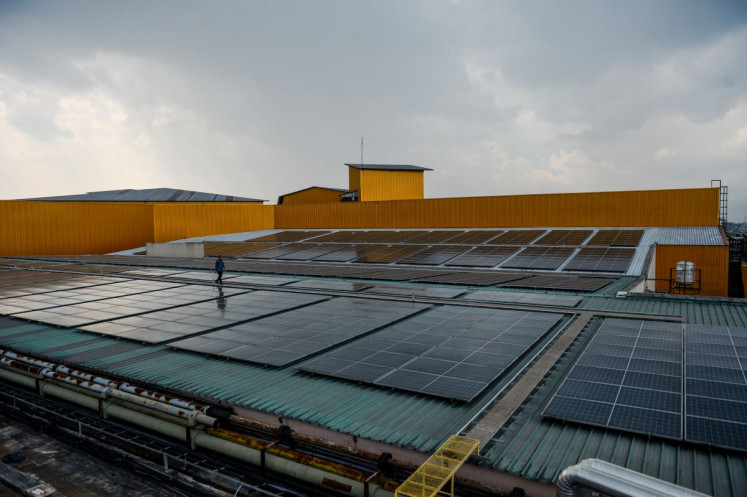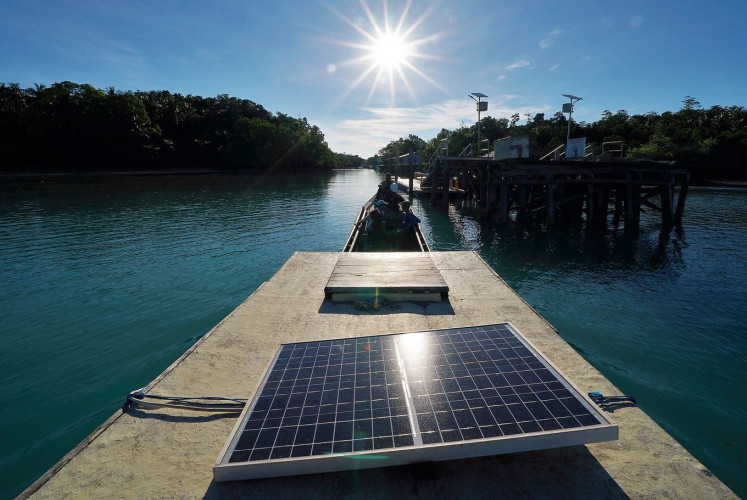Popular Reads
Top Results
Can't find what you're looking for?
View all search resultsPopular Reads
Top Results
Can't find what you're looking for?
View all search resultsFaster, cheaper weapons for looming conflicts
Modern European states now believe they must rearm, both to keep Ukraine fighting and to prepare themselves for a potential wider looming conflict.
Change text size
Gift Premium Articles
to Anyone
A
t the end of August, the United Kingdom’s Ministry of Defence announced it was looking to procure a new medium-range ballistic missile capable of striking targets 600 kilometers away with a conventional high-explosive warhead – and that it wanted the first trials to take place as soon as summer.
The UK’s Project Nightfall would represent the first time the UK has built its own ballistic missile since the 1960s – but it is the sheer speed with which the UK government wants the weapons designed and built that is the most unusual thing about the contract.
The UK government also wants its weapons to be cheap, saying the price for each rocket should not exceed 500,000 pounds (US$677,650). It also wants to conduct the first prototype tests within nine months and to begin production a few months later.
It is a bold task. But it is also a reminder of just how fast modern European states now believe they must rearm, both to keep Ukraine fighting and to prepare themselves for a potential wider looming conflict.
United States President Donald Trump’s administration says it continues to work hard to halt fighting in Ukraine, with the US president also saying he has received an undertaking from Chinese counterpart Xi Jinping that China will not attack Taiwan in the current presidential term.
The reality, however, is that there is a growing expectation fighting will continue in Ukraine, continuing to consume enormous quantities of weaponry. US allies in both Europe and the Pacific continue to worry that Russia or China will launch further land grabs if they believe they can win an easy victory.
The result is a level of arms manufacture unseen in recent years – much of it focused on mass-produced long-range strike systems as well as short-range defensive weapons.
UK maritime drone manufacturer Kraken Technology Group says it can produce up to a thousand of its unmanned K3 SCOUT surface craft a year, and this capacity is set to at least double in 2026 thanks to a deal with German shipbuilder NVL.
Last week, Taiwan said that it is developing a low-budget long-range cruise missile with US autonomous weapons maker Anduril, which has also just signed a $1.1 billion deal to deliver its “Ghost Shark” underwater drone to Australia.
The Defence and Security Equipment International (DSEI) arms fair in August in east London was among the largest in its history, full of firms hoping to take advantage of rising defense spending both in Europe and worldwide.
A divide appears to be emerging between defense firms that can provide weaponry at scale in a hurry and those that offer services judged somewhat less essential.
That does not mean major contracts are not being signed for nonlethal technologies – during the arms fair, tech giant Google and the UK government signed a deal worth 400 million pounds to develop secure cloud computing that would allow better exchange of information with the US and other allies.
But the priority is often building weapons systems that can be scaled up very quickly – and which are cheap enough that they can be used on a large scale without stupendous expense. That includes building a new generation of affordable “interceptor drones” that can bring down other drones and missiles at a much lower cost than systems like the US Patriot air defense missile.
The next generation of unmanned ground vehicles already looks to be substantially larger than those being used in Ukraine, evolving beyond simple robot trucks for resupply.
Not everyone, however, is convinced that foreign manufacturers offer as much advantage to Ukraine as they might like. The issue is relatively simple: the sheer volume of weaponry being consumed on Ukraine’s front lines every day is so vast that the cost of using some of the more expensive Western systems could prove catastrophic.
Ukrainian officials and experts describe a 30-km “zone of death” produced largely by unmanned drones across both sides of the front. Any person or vehicle moving in this zone or producing a significant heat signature is likely to be struck.
Across the most contested areas, it can be relatively common for Ukrainian units to deploy hundreds and sometimes thousands of drones a day, many of them failing to come back.
Ukrainian arms firms, unsurprisingly, argue that they offer an easy solution to that problem, already routinely producing large volumes of weapons much cheaper than many of their foreign counterparts. Some of their weapons have reportedly sometimes failed to function in Ukraine’s fast-moving battlefield.
But they also find themselves much less able to access foreign capital and even basic business services, in part because of corruption worries.
At the DSEI conference in London, British aviation, defense and security trade group ADS announced it would admit Ukrainian firms. But the truth is that such partnerships have not always proved that easy. At the same conference, Rheinmetall CEO Armin Papperger told Politico the building of an ammunition plant for the German company within Ukraine had been delayed by disagreements over its location.
Still, the company confirmed construction of the plant was going ahead – and that Ukraine would also take delivery of Rheinmetall’s Skyranger antiaircraft cannon by the end of the year. At best, proponents of that system say it could prove to be a game changer against drones at the front, potentially delivering another major shift in the dynamics of the conflict.
That raises another challenge: nations racing to invest risk inadvertently saddling themselves with equipment that is fast proven obsolete. It’s a challenge Western militaries and their associated industries have struggled to tackle in the past – but this time the stakes may be considerably higher.
---
The writer is columnist for Reuters. The views expressed are personal.











